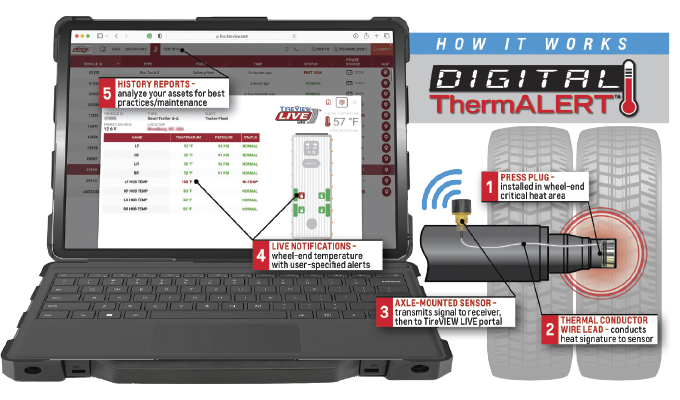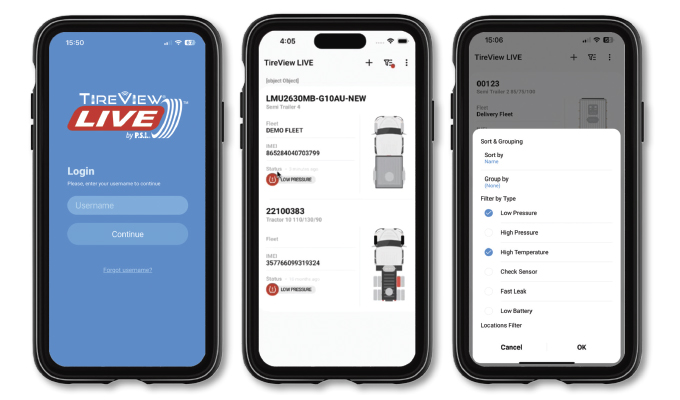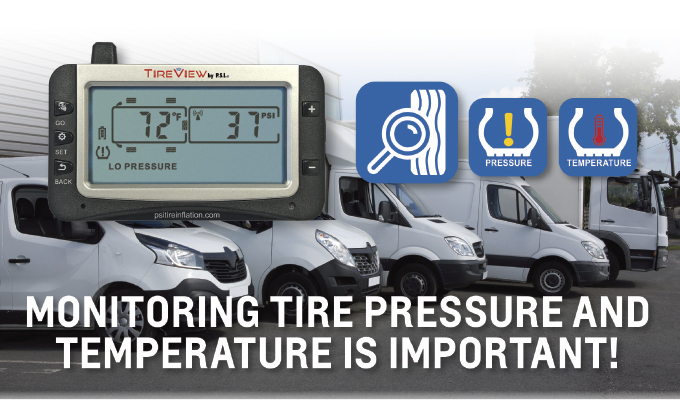Thirty years ago, a private company was founded based upon a new and innovative concept of automatically filling underinflated trailer tires—even while the trailer is moving. This company is Pressure Systems International (PSI), and it introduced an industry-first in Automatic Tire Inflation Systems, or “ATIS,” for commercial trailers.
It is no secret that underinflated tires represent a significant part of a fleet’s operating costs when adding up the impact on fuel, maintenance costs, downtime, and the cost of the tires themselves. It is a common statistic that 10% underinflation causes a 1% degradation in fuel economy, according to the Goodyear Computer Fuel Economy Model. Combine this with the fact that numerous studies have found that a significant percentage of tires are found to be underinflated. An FMCSA 2007 study found that only 44% of tires were within 5 psi of their target pressure. Numerous studies have shown that tire management solutions such as ATIS or TPMS can provide an ROI of less than one year.
Having the proper systems in place can help operators reduce the risk of tire-related issues and increase fuel economy. While a pre-trip inspection can be effective to verify proper inflation at the beginning of the trip, the driver does not have tire visibility after the vehicle leaves the terminal. The likelihood of tire damage, such as punctures, increase dramatically when vehicles operate in off-highway environments. The loss of fuel economy, increased tread wear, and the potential of a roadside call can be avoided with appropriate intervention.

THE PSI SOLUTION
When considering ATIS versus TPMS, ATIS will provide a faster payback given its immediate response to an underinflated tire. For ATIS, trailer applications are the most obvious, whereas TPMS is usually the best choice for tractors and straight trucks. PSI recently released a video for drivers offering a short but informative review of the brand’s Automatic Tire Inflation System. This four-minute video offers a detailed explanation of the PSI ATIS system operation and expectations when the system indicator light illuminates, walking you through basic operations. It’s perfect for onboarding new drivers or for a periodic refresher and safety training. The video can also be accessed on a mobile device or tablet.
Fleets using the PSI ATIS get the added benefit of ThermALERT, which provides an early warning of wheel end “thermal events.” Such unsafe events can be due to bearing issues, low tires causing high temperatures, mis-adjusted or dragging brakes, or other factors. In the case of an activation, the problematic wheel end is easily identified by the indicator light illuminating and an audible noise caused by air escaping through the wheel end.
THERMALERT & TIREVIEW
Recently introduced, a “Digital ThermALERT” version of the same feature is now available for real-time data that can be integrated into smart trailer solutions using telematics. Think of it as traditional ThermALERT with benefits. With Digital ThermALERT, operators now have full visibility of wheel-end temperatures via a telematics portal through PSI’s integration partners.
Here’s how it works: A thermocouple is installed inside the axle spindle that senses the actual temperature under the bearings, and a sensor mounted on the axle transmits the data to the receiving unit. Live notifications will appear on the telematics solution. Digital ThermALERT can help operators determine their normal operating temperature and determine the optimal time and place to repair the trailer, avoiding a roadside call or worse.
Recognizing that fleets needed to improve their tire management program beyond just trailer tires, PSI launched TireView TPMS, engineered to meet the needs of the commercial vehicle industry. With a signal booster that is standard in every kit, TireView offers unmatched signal reliability with a multitude of sensor types providing best fit solutions for the fleet. All sensors are IP67-rated for dust and water intrusion.

FLEET FOCUSED
A fleet’s maintenance practice and sensor management is important to consider when specifying a TPMS solution. Fleets may determine that using multiple sensor types for their tractors, trucks, and trailers may be the best way to minimize issues such as sensor loss or misplacement. Easy installation options can include Cap Sensors that screw on to valve stems, Flow-Thru Sensors that allow airing up tires without removal, or Band Sensors that are internally mounted to the wheel/tire assembly. You may also use Flow-Thru Brackets and Check Port (CP) Hoses on drive and trailer axles. The CP hoses bring the valve stem of any tire within easy reach and allow airing up of tires without need for TPMS sensor or valve cap removal. This CP hose is especially convenient for dual tire applications on trailers, tractors, and other dual tire equipped vehicles.
The TireView LIVE data analytics platform is just one of many offerings in the telematics market that provides actionable data at a glance using vehicle data that has been pushed to the fleet’s operations, reducing reliance on the driver. Depending on the access portal or telematics system, the fleet can access a dashboard that can give a tire health snapshot of all fleet assets. This allows maintenance or dispatch to make best decisions about scheduling maintenance or asset deployment.
All of these solutions are designed to be easily retrofittable to existing equipment for fleets of all sizes and to improve efficiency.
FOR MORE INFORMATION
The North American Council on Freight Efficiency (NACFE.org) rate ATIS and TPMS with a high confidence rating and consider them “very adoptable” with an ROI of less than one year, depending on application. Find out more, visit www.psitireinflation.com.




